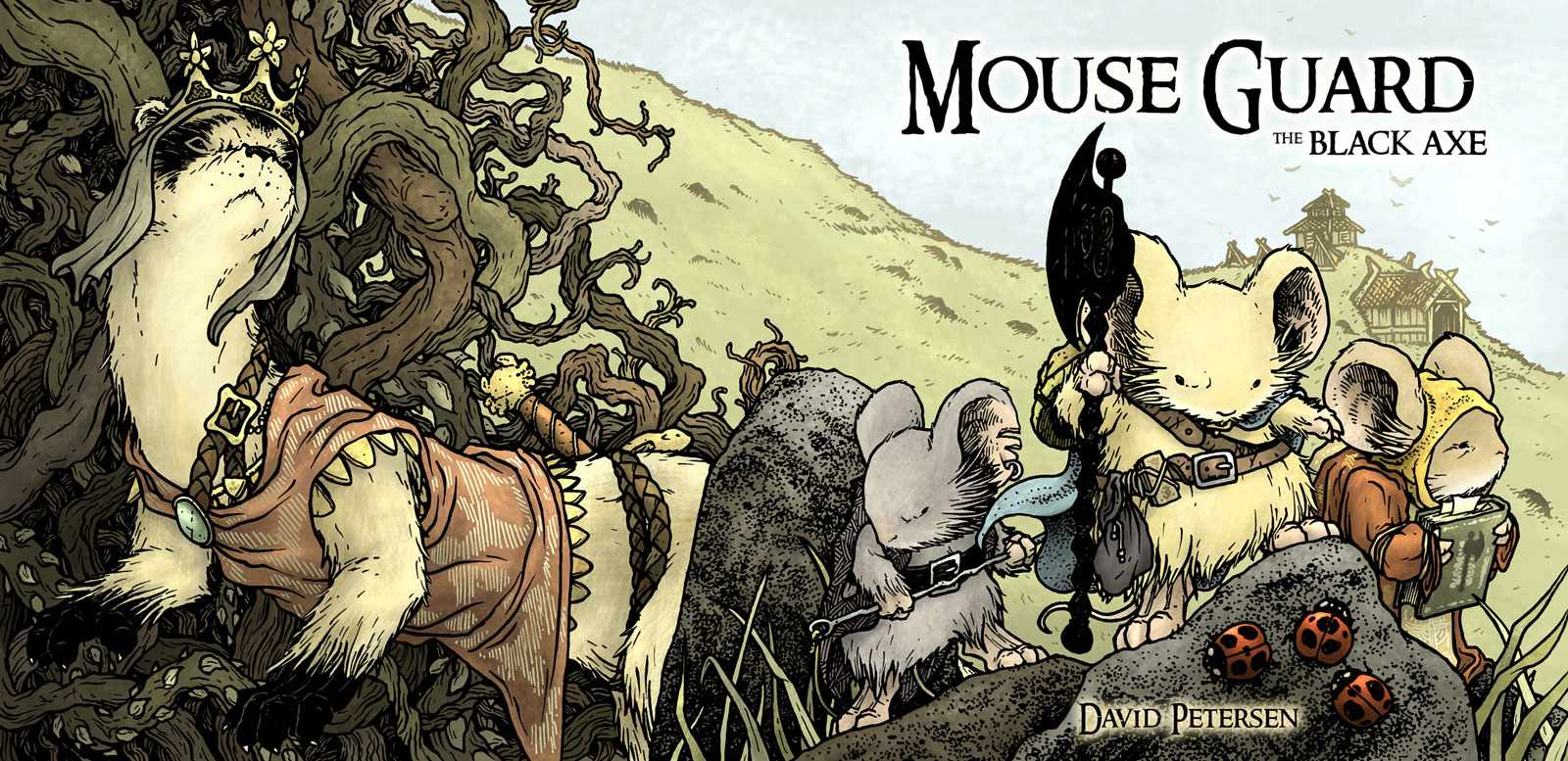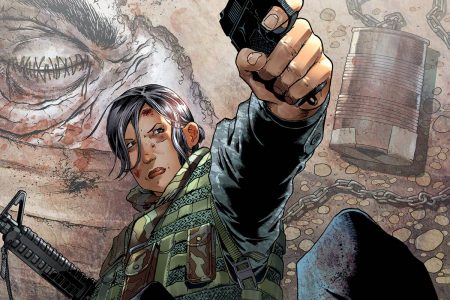Mouse Guard: The Black Axe #1–6
Story and art by David Petersen
Published by Titan Books
I am aware that a lot of people who are into modern comic books don’t really get anthropomorphic comics books, specifically where the entire cast and setting is anthropomorphic, and not just animal characters in a human world, such as Howard the Duck, Rocket Racoon, the Teenage Mutant Ninja Turtles. I’ve never had the problem – one of my favourite comic books ever is Stan Sakai’s Usagi Yojimbo – but I feel sorry for these people because they are missing out on very good comic books (Grandville, Mice Templar, Blacksad) and on the beautiful splendour that is Mouse Guard.
Mouse Guard: The Black Axe is a prequel to Petersen’s previous books, Mouse Guard: Fall 1152 and Mouse Guard: Winter 1152; those stories introduced the members of the Mouse Guard, the brave protectors of their fellow mice in a medieval world, as well as a mythic character known as the Black Axe. The Black Axe is a mouse called Celanawe, who took the name of the black axe he wields. This story is set nearly 40 years before and sees Celanawe revealing the story of how he became the Black Axe and the quest to find it.
After a scene-setting prologue narrated by Matriarch Gwendolyn in the spring of 1153 (which provides a flavour of the world in which the stories are set, with mice harvesting berries and honey, using axes and saws to cut trees, riding hares like horses, fighting badgers and tortoises with swords and bows and arrows), we flashback to the spring off 1115 and Celanawe (pronounced ‘Khel-en-awe’) building an outpost. He is visited by Em, an elderly lady mouse, flying on a crow to find him and tell him that he is the last of her kin and that she has a mission for him.
After escaping a pack of Fishers (vicious cousins of weasels) on a duck after they killed Em’s bird (she has learned to speak the languages of many furs and feathers), she informs him that they must go on a quest authorised by the Matriarch to find the mythical Black Axe, believed to be a legend, created by the famous blacksmith, Farrer. Em’s research discovers that it was last seen in 1086 in the hands of her brother, who was seen on a land across the Northern Sea. So they go to Port Sumac to commandeer a vessel to take them there and fulfil their duty, acquiring the services of Conrad and his ship, with Em’s charts and understanding of the constellations to find their way to uncharted territories.
It is a treacherous journey, ending in a shipwreck, where they find the body of Em’s brother on the shores of Ildur, the land ruled by the ferret, King Luthebon. He now possesses the Black Axe, having killed its previous owner; he does not want to give it up, until his son his brought into the throne room, killed by a fox in the briars. Celanawe offers his services to kill the fox, in exchange for the axe; Em offers herself as security if the king gives the axe to Celanawe for the task. So Celanawe must venture into unknown territory with an impossible task with everything at stake, and bravery and despair and sadness to follow …
To say that this book is beautiful, in both art and story, is an understatement, and it’s a joy to discover this for yourself. The awards (the Eisner awards for Best Graphic Album Reprint and Best Publication for Kids in 2008) and the good reviews are all warranted – Petersen has created something magical with Mouse Guard. There aren’t enough words to describe the art: stunning, phenomenal, beautiful, sumptuous, lavish, exquisite … Petersen is able to imbue his animals with character, charm, nobility, warmth and grace. There is also real depth to the backgrounds – Petersen includes photographs at the back of the book of models for various locations he created to help him draw – which bring a three-dimensionality to the world of Mouse Guard and a richness to the forests and beaches and woodlands.
The other aspect is the writing: Petersen has created a wonderfully dense and believable world for his characters to inhabit, and it is the characters that are the heart of the story. Celanawe, Em, Conrad, even the king of the ferrets are fully rounded individuals who are completely believable. The different animals equating to broad characteristics is a straightforward start to defining them, but there is more depth than that, which makes the events of the tale more engrossing and thrilling and emotional. Petersen is a gifted storyteller, and this epic anthropomorphic fantasy adventure is an incredible expression of his talents. I highly recommend this great book, and I can’t wait to read the first two collections.
Disclosure: this book was provided for review purposes.




